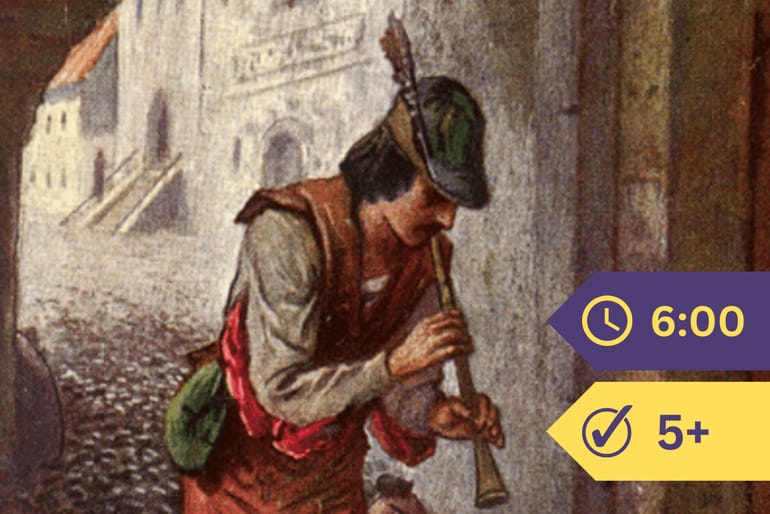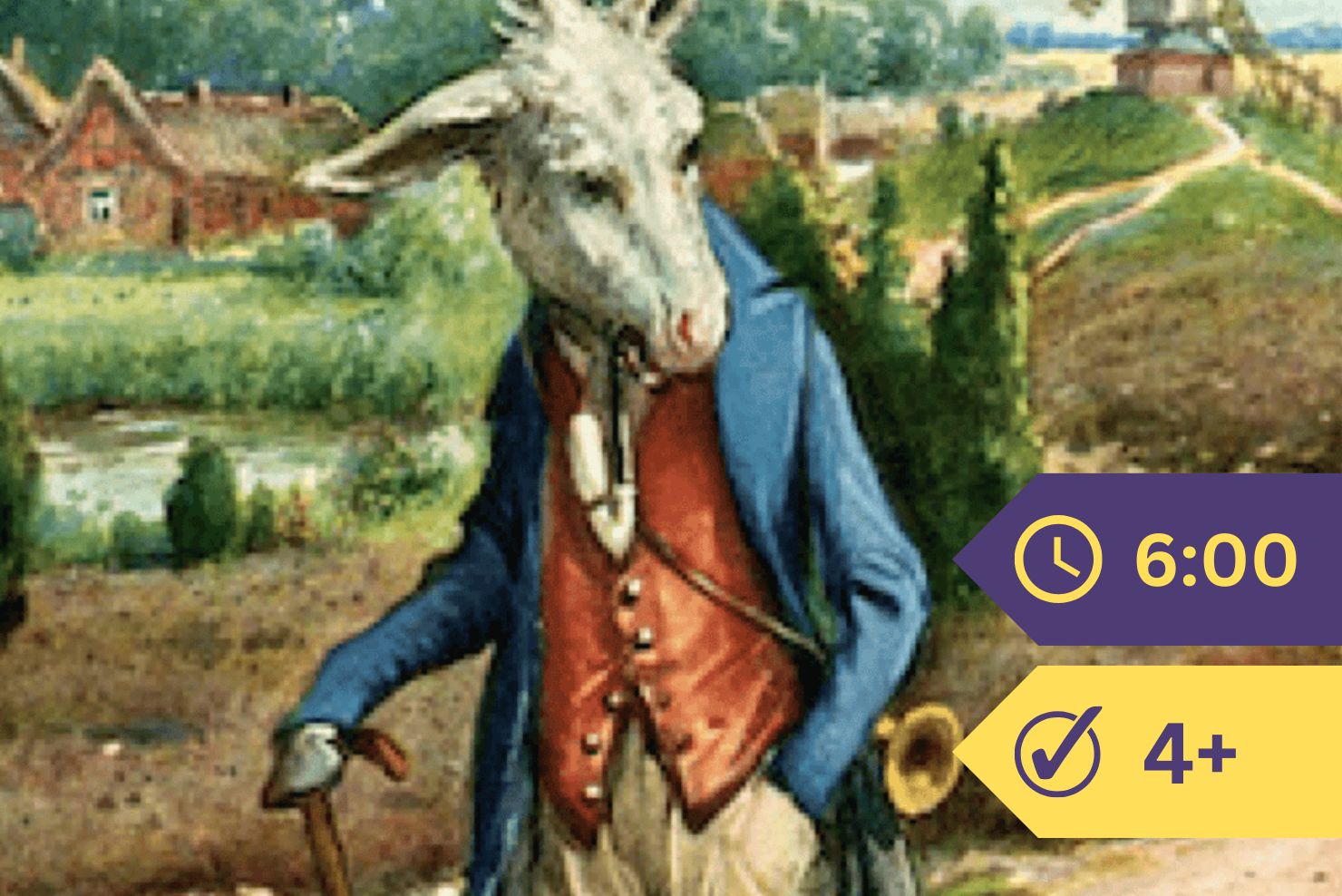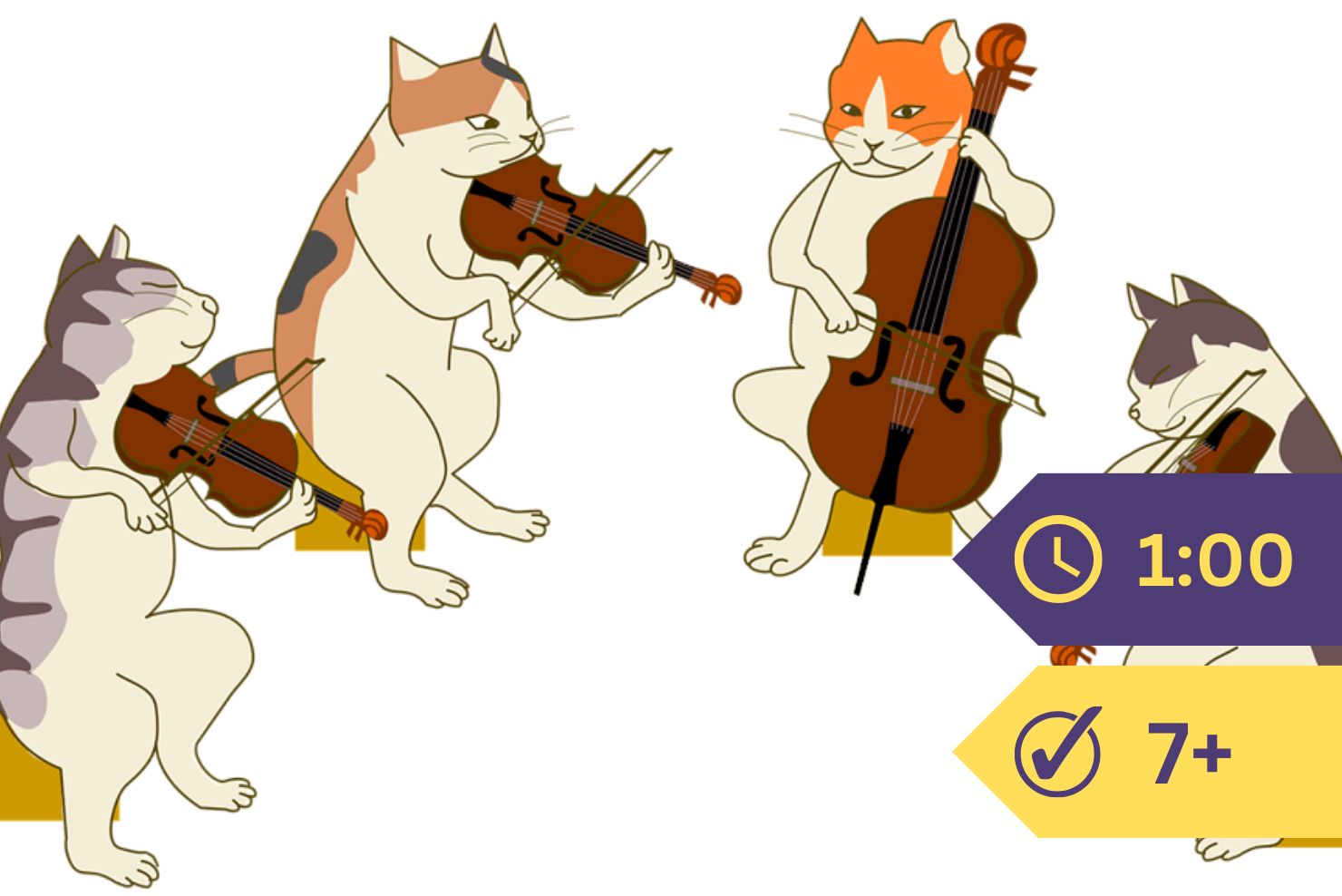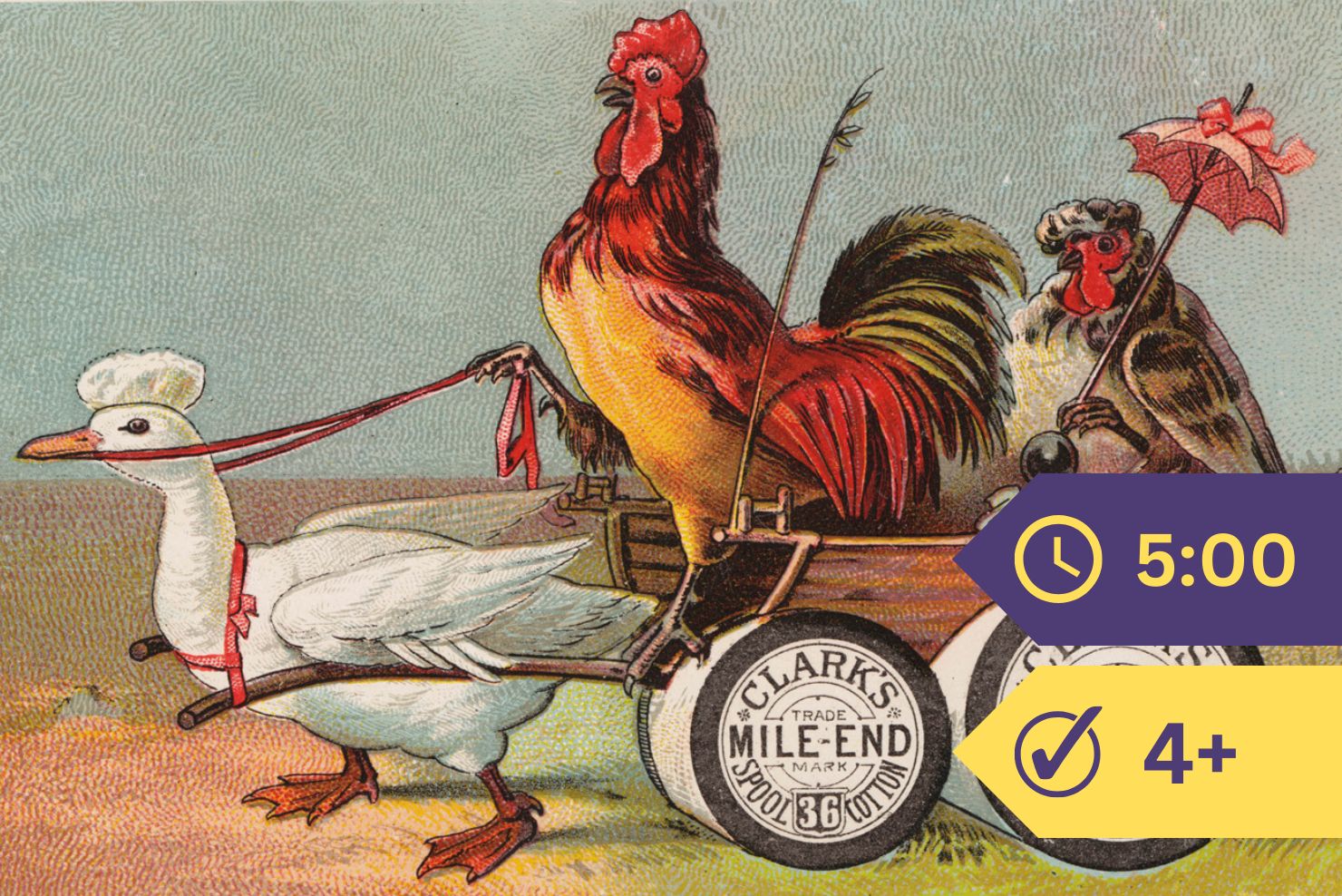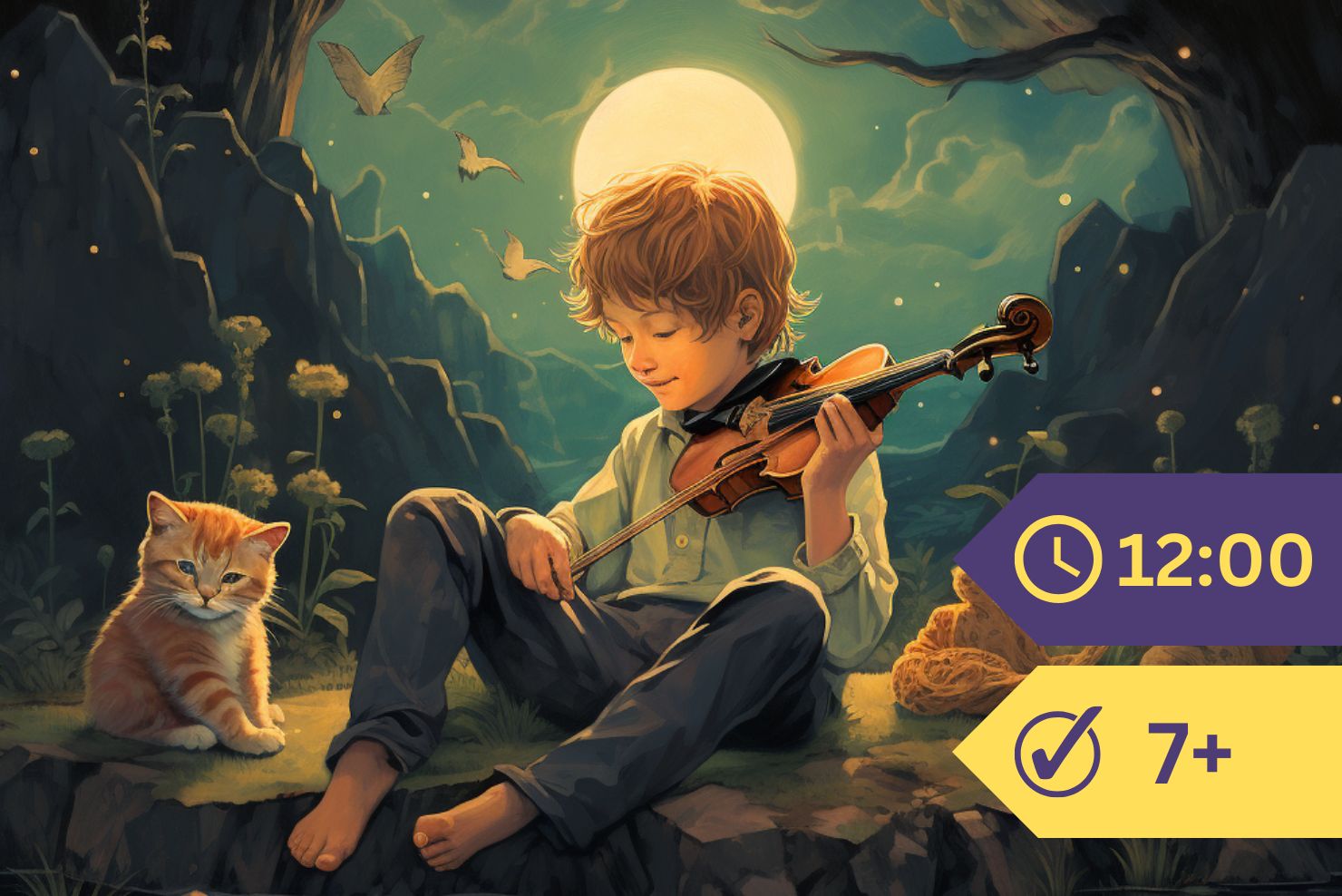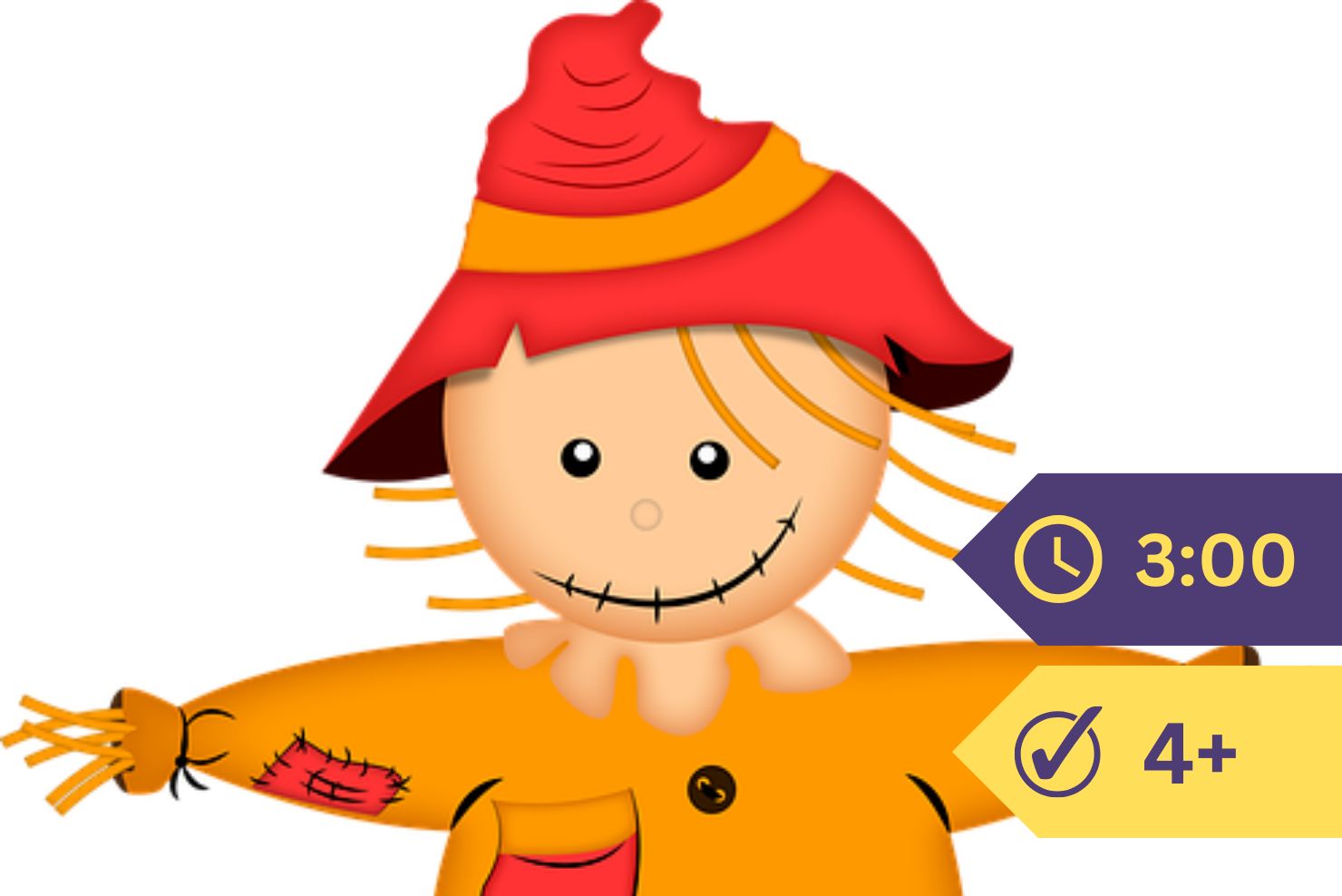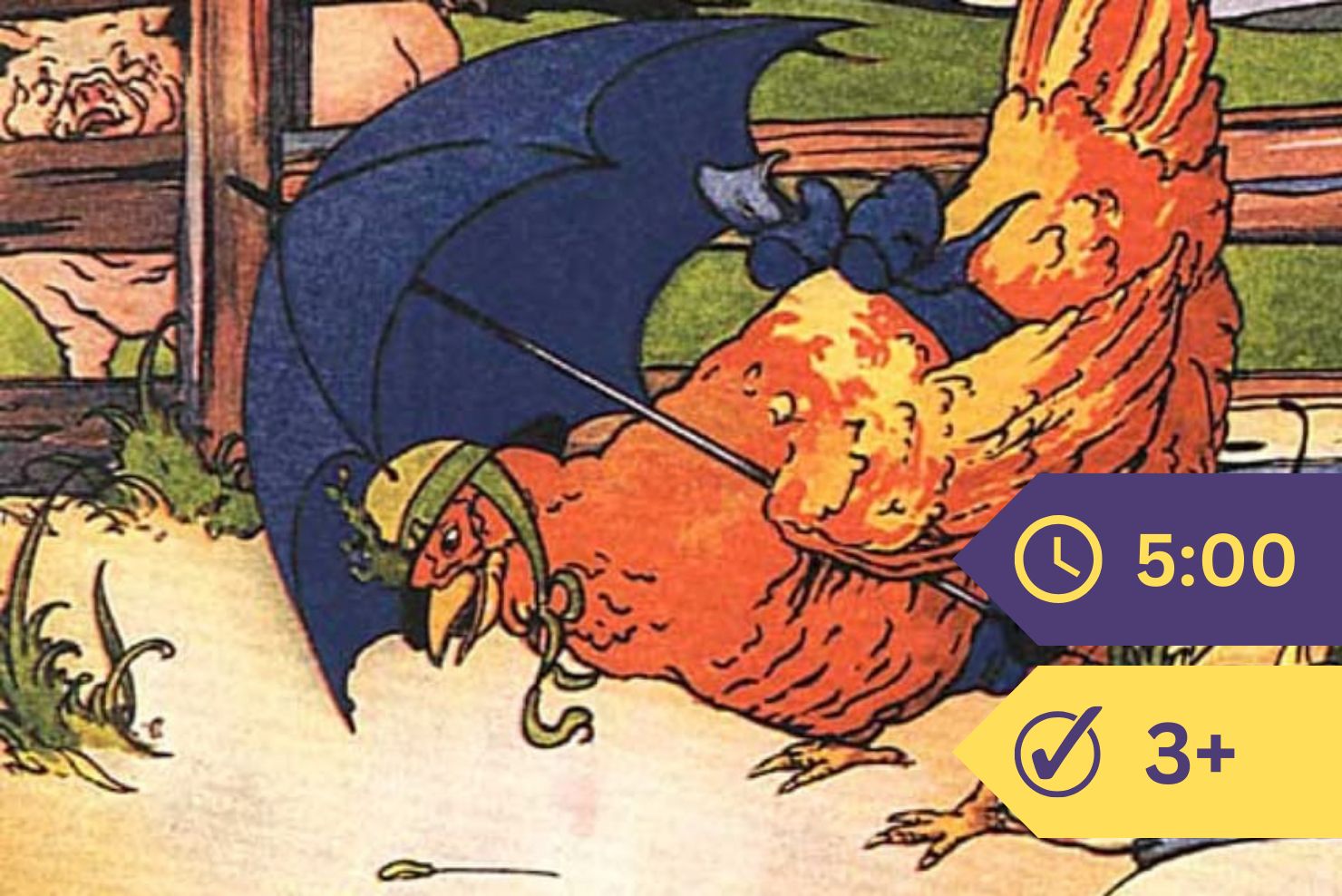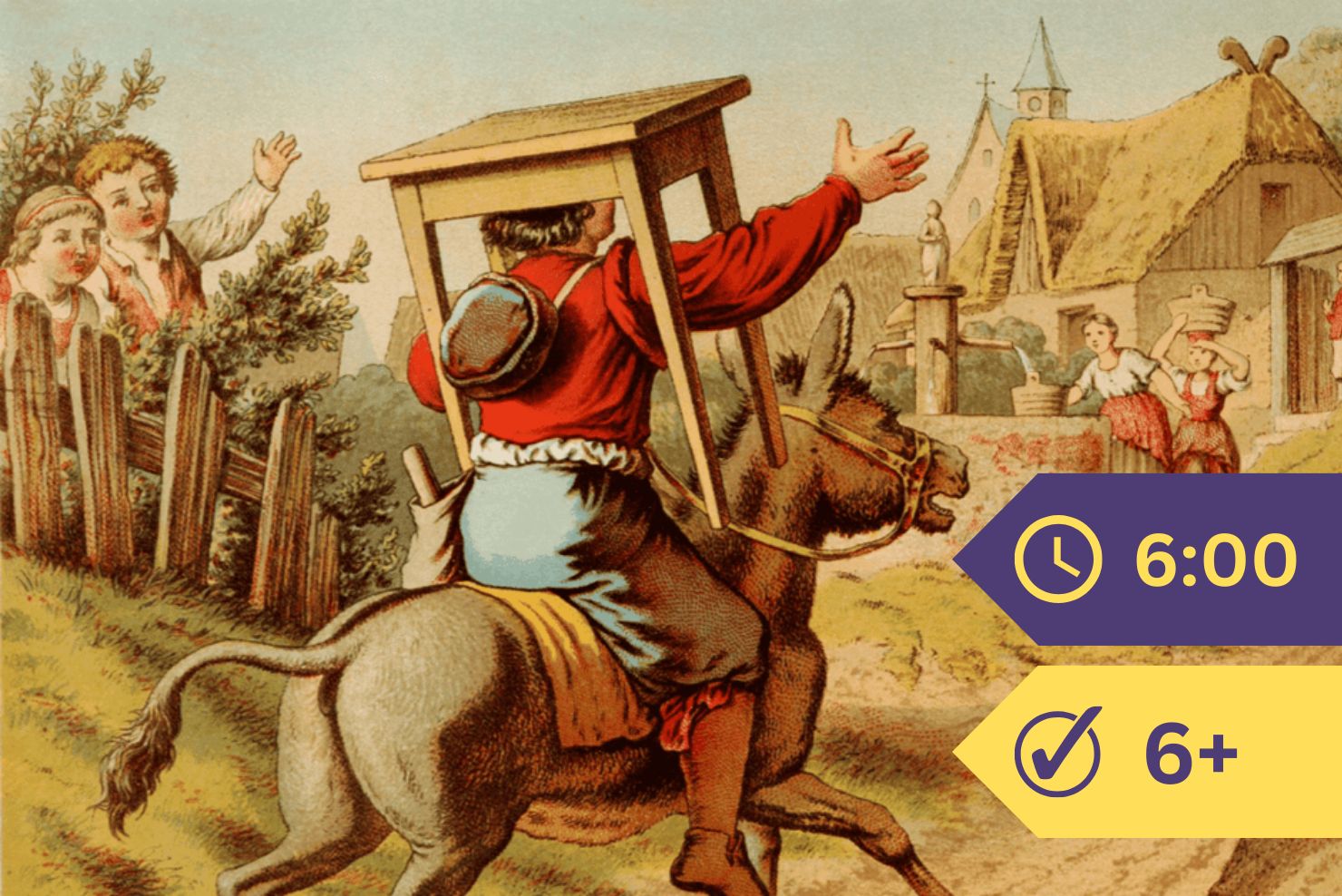A long time ago, the German town of Hamelin was attacked by rats. They were no ordinary rats, but huge black monsters. They were so brazen that they ran about the streets even during the day. They were everywhere. In the food, in the rooms and even in your shoes. There were rats wherever you looked.
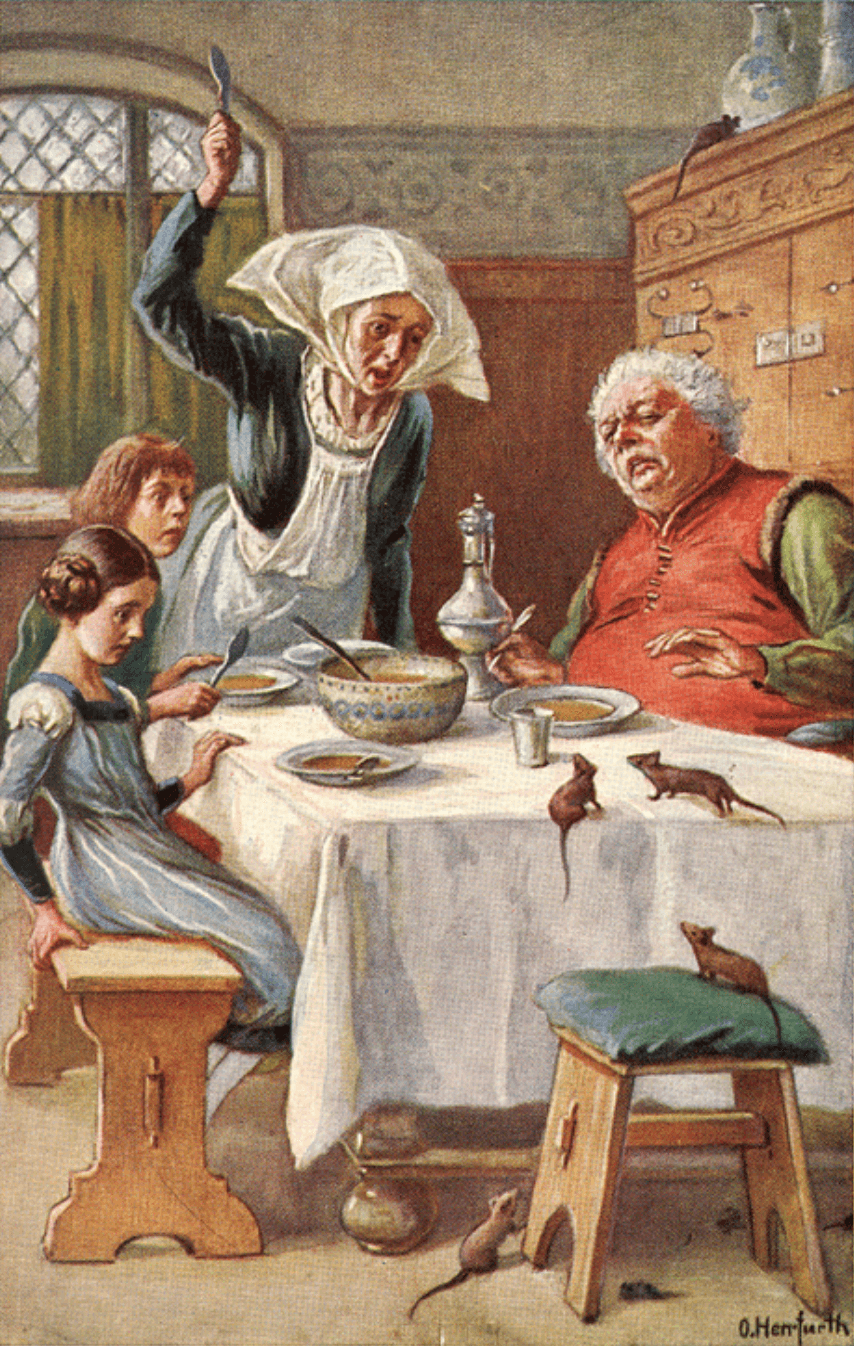
The people of Hamelin had tried everything, but the more rats they killed, the more they seemed to multiply. They were at their wits’ end when, one day, a strange man walked into town. His moustache resembled a rat’s tail, his yellow eyes only just peeped out from under his big hat and his nose was crooked. He played his flute and walked straight to the town hall.
In the town hall, the council had just met. The stranger announced that he could rid the city of the rat plague, but they would have to pay him well. The citizens did not trust him and cried out that the man must be a magician. However, the clever mayor had a good plan. He reassured the people: “If the flute player speaks the truth, then he has sent the rats to us in order to make a lot of money. I will not allow it. Just watch me!” The people trusted the mayor and let him go his way.
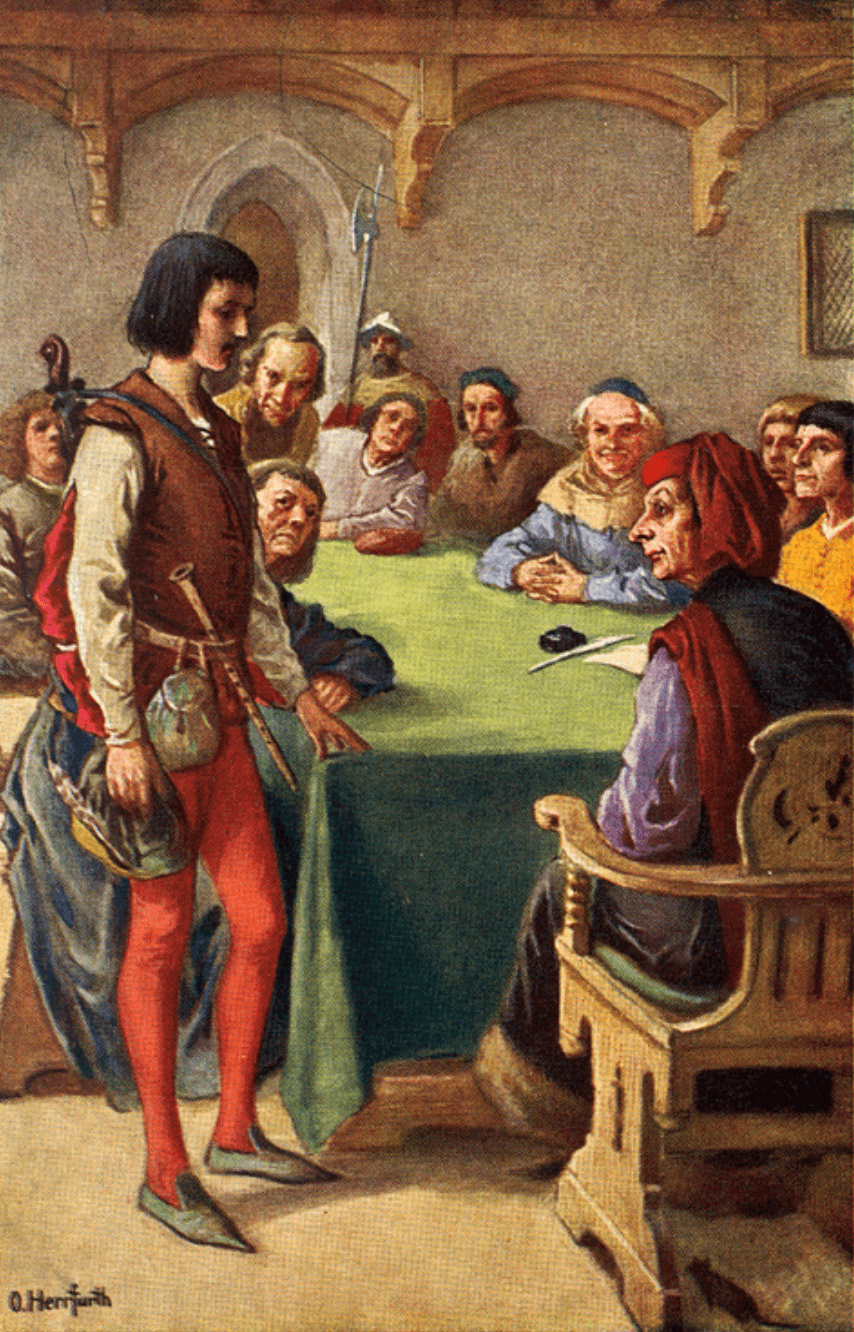
The stranger came to the mayor and said, “For just one silver coin per head, I’ll chase all the rats out of the city before morning.” The councillors began to wail. One coin a head would amount to a huge sum. But the mayor shrugged his shoulders and said, “For every head, you get one silver coin.”
That evening, the flute player would begin. The inhabitants were not allowed to walk on the streets while he was working, but they could watch him from their houses. The flute player stood in the market square and in the first rays of the moon he began to play his flute. It began as a soft and lovely sound, but it became louder and more insistent. Soon it could be heard in the whole town. Immediately the rats came shooting from everywhere and ran in long lines towards the flute player. He turned and walked, still playing his flute, towards the river. Here he made the rats jump into the river one by one.
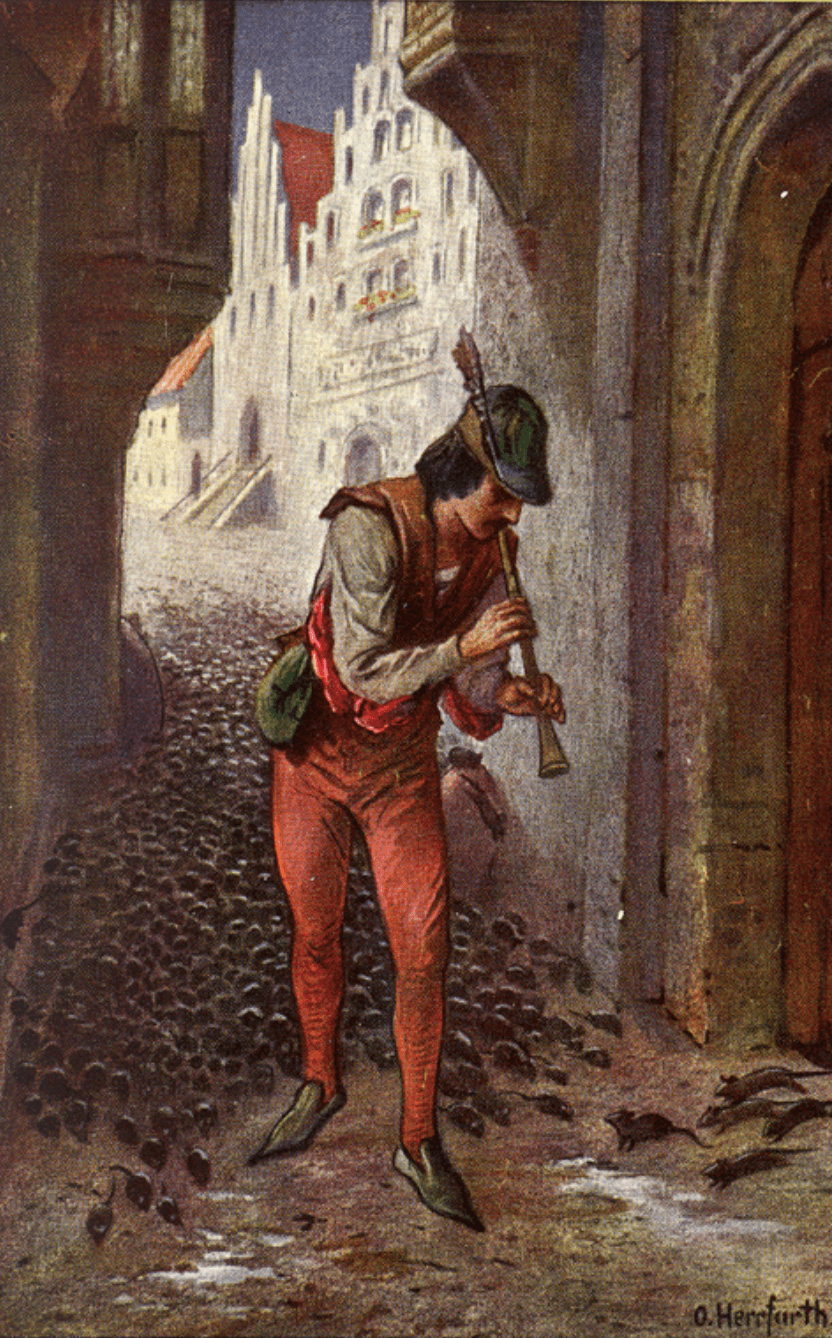
Last of all, the king of the rats arrived at the river. This old rat had turned white with age. “Were that all of them, my friend?” the flute-player asked. “Yes,” replied the rat, “all nine hundred and ninety thousand, nine hundred and ninety-nine.” Then the white rat also jumped into the river and the flute player returned to Hamelin satisfied.
That night, for the first time in ages, the people of Hamelin slept well. The next morning the flute player reported to the councillors. “I have chased away all nine hundred and ninety-nine thousand, nine hundred and ninety-nine rats. I have come to collect my money.” “Well, let’s go and count those heads then,” replied the mayor. The rat-catcher had not counted on that. “The heads?” he shouted angrily, “Go and find them in the river.”
The mayor reacted calmly. “If you don’t honour the agreement, we don’t have to pay either. But you have done us a service, so we will gladly give you 50 silver coins.” “Keep the reward!’ cried the rat-catcher, “you children will pay me.” And with these words he ran out of town.
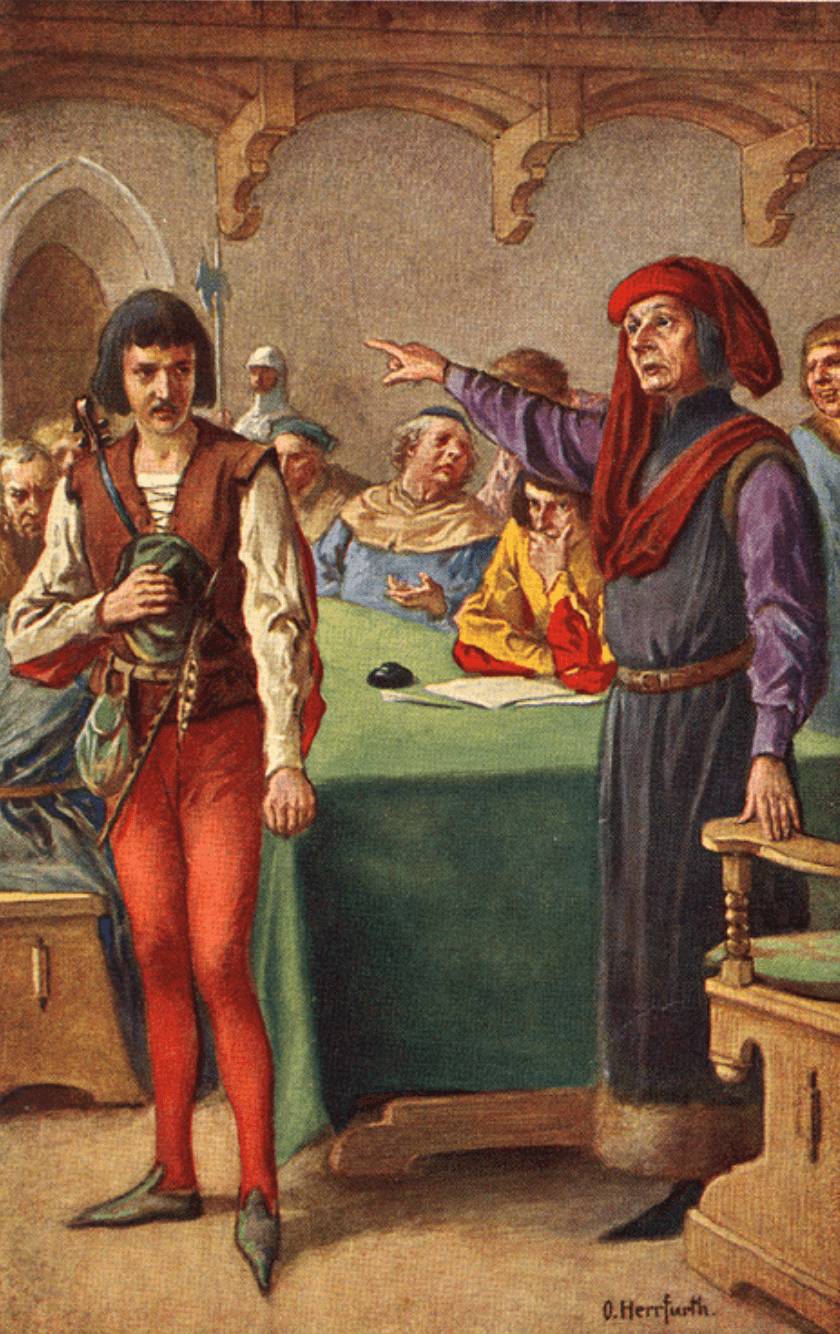
Nobody in Hamelin took the rat-catcher’s threat seriously. So the next day they went to church, carefree. But when they got home, they got the shock of their lives. All the children had disappeared without a trace.
Then three little boys came running into town and told a terrible story. While all the adults were in church, the children had heard beautiful music. They had gone outside and saw the rat-catcher standing there. While the stranger kept on playing, he ran out of town and all the children followed him to the big mountain. The mountain wall had magically opened and all the boys and girls had run inside. Only the three boys accidentally stayed outside.
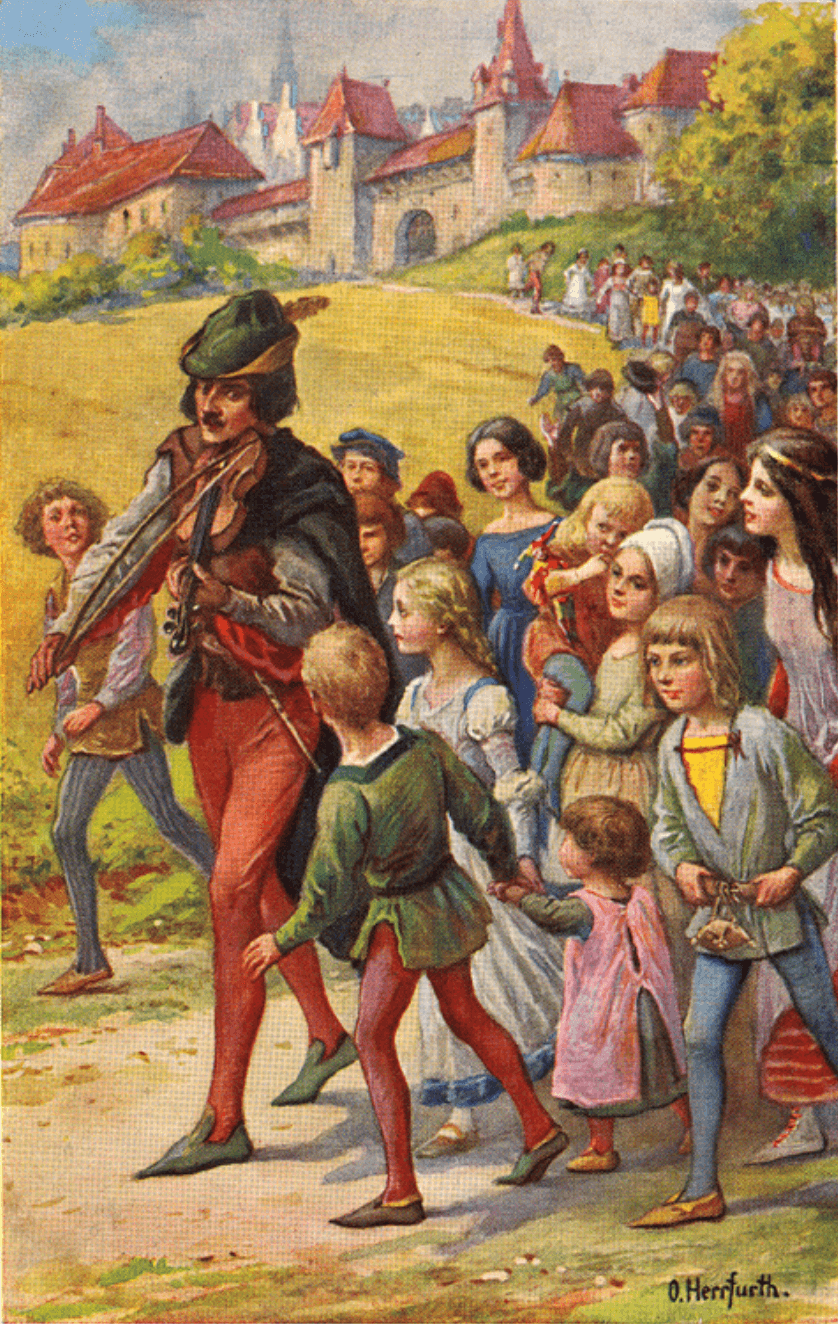
Everyone in Hamelin was miserable. No matter how hard they searched, the children were nowhere to be found. The mayor in particular felt terribly guilty. His sons and daughters had also disappeared. Nobody knew where the children had gone.
It was only a hundred and fifty years later that something became known about the missing children. Some merchants from Bremen came to Hamelin and told about a region in Romania where the inhabitants spoke only German, while the rest of the population spoke Romanian. And since then, the people of Hamelin believed that the inhabitants of Transylvania are the descendants of the missing children from Hamelin. And no one contradicts them.

